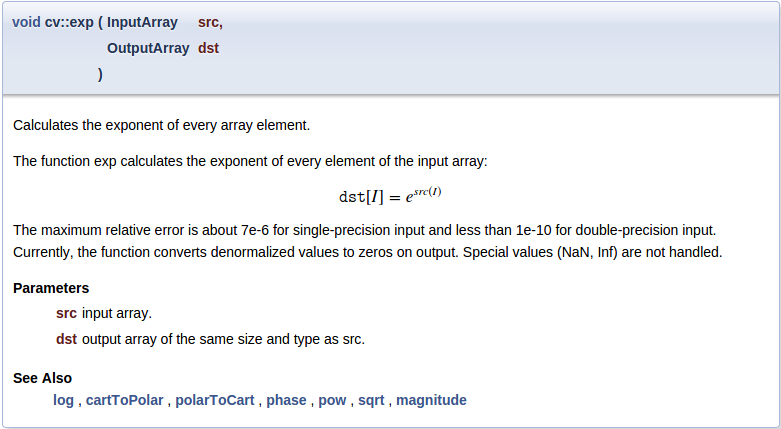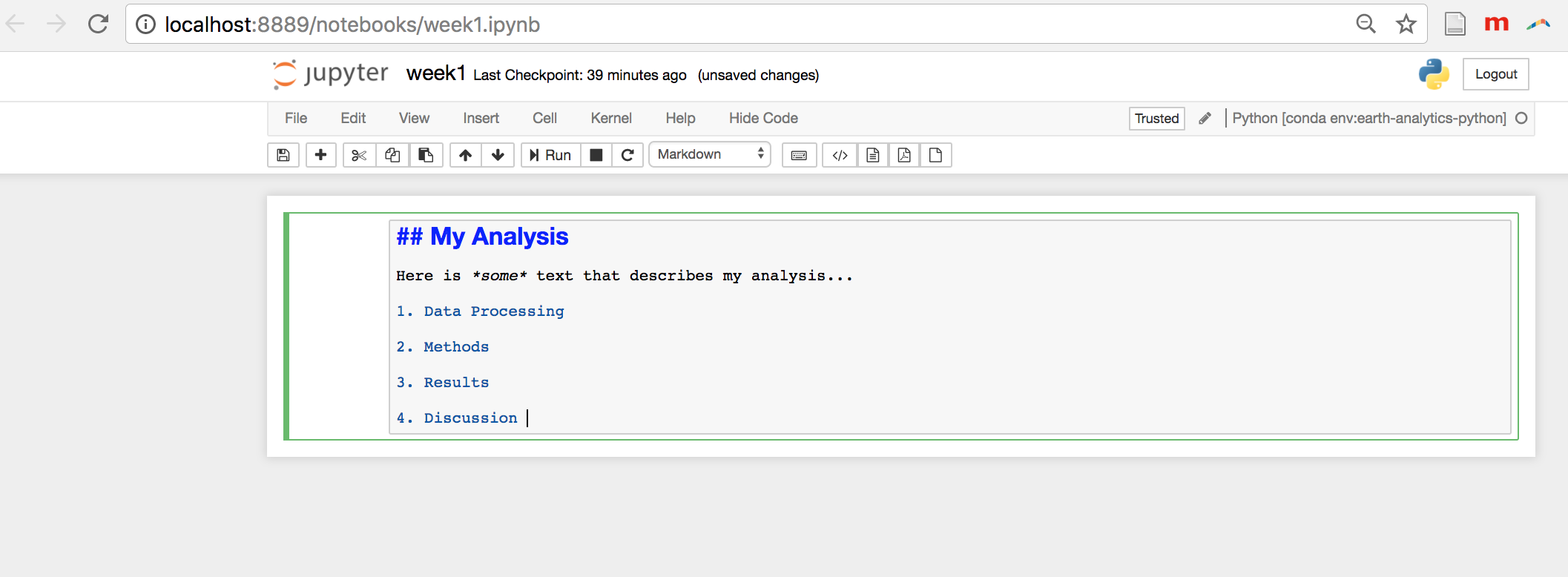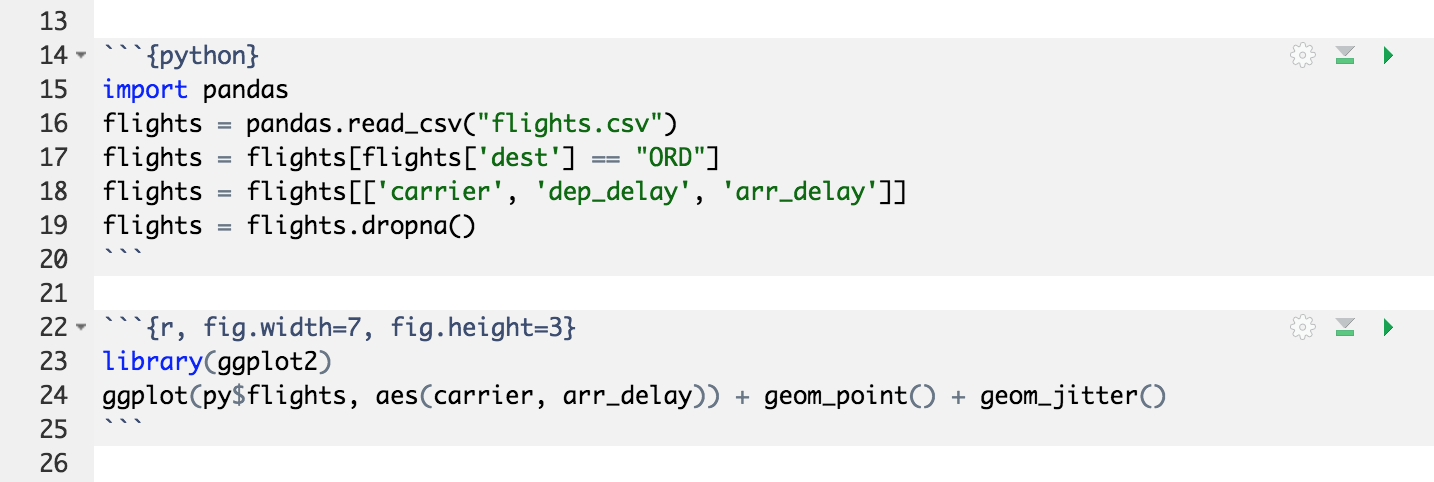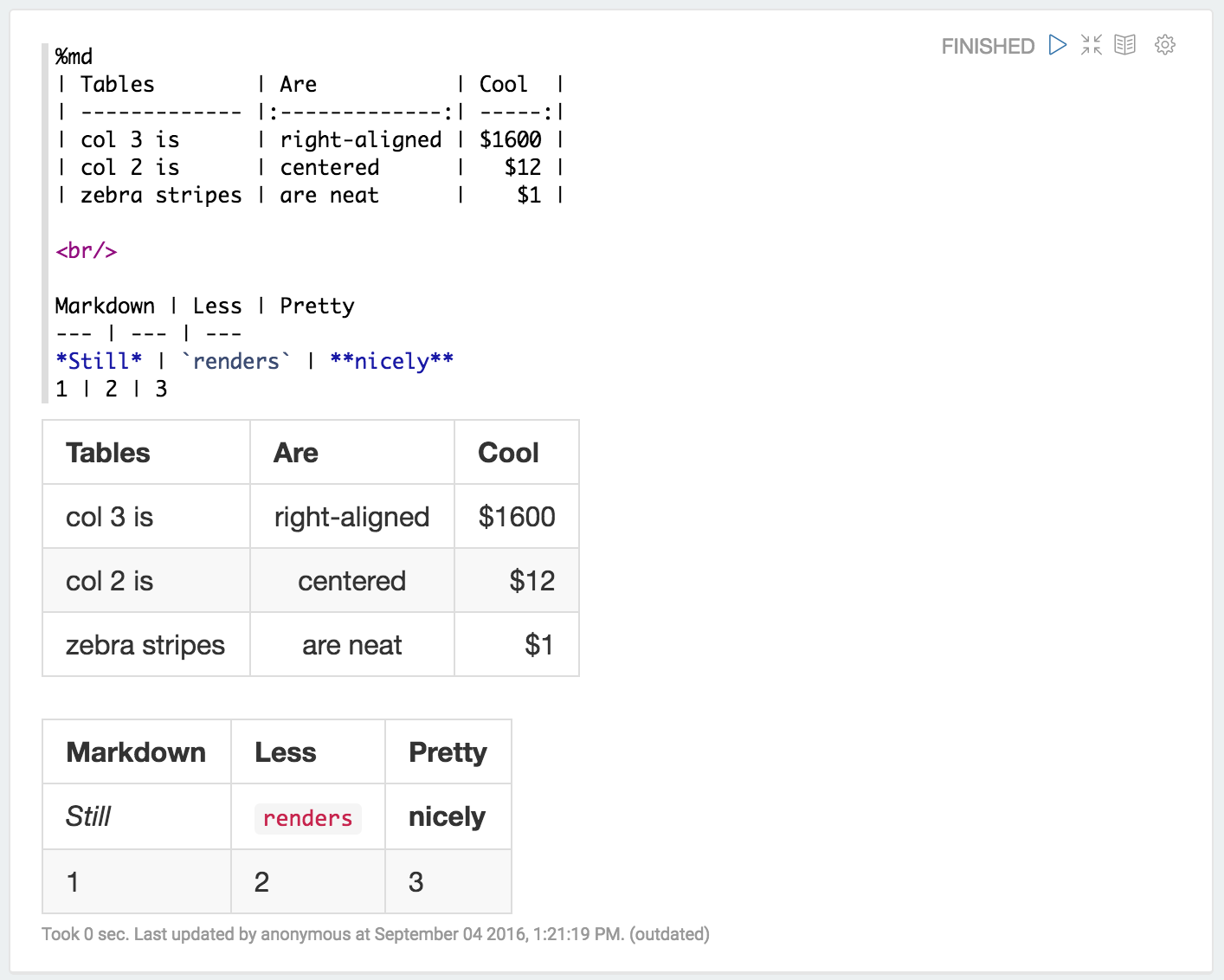A Computer Science portal for geeks. It contains well written, well thought and well explained computer science and programming articles, quizzes and practice/competitive programming/company. Examples of working with text files. Writing and reading list, tuple, different types objects, dictionary, two dimensional matrix, set. In this tutorial, we will learn about python list append method. It adds a new element to the end of the list. Python Tutorial. Code section examples are given below: Using Markdown ```Python str = 'This is block level code' print(str) ``` Using Markup Tags Python str = 'This is a block level code' print(str).
This topic provides examples of writing and reading information for text files.
Contents
Search other websites:
1. Read/write list containing n integers
The following operations are shown in the example:
- creating a list of 10 random numbers;
- saving the list in a text file;
- reading from a file to a new list for control purposes.
Python Markdown Format
The text of the program is as follows:
The result of the program
⇑
2. Read/write list containing strings
When reading/writing lines, it is not necessary to implement additional conversions from one type to another, since the data from the file is read as lines.
The result of the program
⇑
3. Read/write tuple containing floating point objects
The example demonstrates writing and reading a tuple that contains floating point objects.
The result of the program
View of myfile5.txt file
⇑
4. Reading / writing a tuple containing objects of different types
If the tuple contains objects of different types during writing/reading, it is important follow to the sequence of stages of converting objects to the desired type. The following is an example of writing and reading a tuple that contains objects of integer, logical, and string types.


The result of the program
⇑
5. Read/Write Dictionary
The dictionary can also be written to a file. In this example, a dictionary is written and read that contains a list of weekday numbers and their names. To facilitate reading data, each element of the dictionary is placed on a separate string.
The result of the program
View of file myfile6.txt
⇑
6. Read/write two-dimensional matrix of integers, presented in the form of a list
The example demonstrates writing and reading a two-dimensional matrix of integers of dimension 3*4.
The result of the program

View of the file myfile8.txt
⇑
7. Read/write a set that contains integers
The example shows a possible way to save the set in a text file.
The result of the file
The view of myfile7.txt file
⇑
8. Read/write data of different types: list and tuple
To write data of different basic types to a text file, you need to sequentially write data of one type, then another type. When reading such data, one must adhere to this very order so as not to violate the resulting data structure.
The example demonstrates sequential writing to a list file and tuple. When reading, it follows the same sequence: first the list is read, then the tuple. The list includes strings. To facilitate the recognition of the file format, each written (readable) element is placed on a separate line in the file. Since the list and tuple may contain a different number of elements, their dimensions are written to the file.
The result of the program
The view of myfile9.txt file
⇑

Related topics
Python Markdown Code
⇑
Python tutorial is a widely used programming language which helps beginners and professionals to understand the basics of Python programming easily.
Python is a high-level, easy, interpreted, general-purpose, and dynamic programming language. It supports object-oriented programming approach. It is straight forward to learn, and its elegant syntax allows programmers to express concepts in fewer lines of code as compared to other languages such as C, C++, or Java.
It has excellent>
Python 3.x:
2 | print('Hello World.') |
Usage of Python
Python is used by many programmers andused in various fields. Most of the time, it is used to perform any complicatedtask in a much easier way than other programming languages.
WhenPython is installed, it comes up with the many powerful libraries which made upof many functions.
Thereare many libraries available on the internet that makes it possible to docomplicated tasks more straightforwardly.
Thesestandard libraries make it a powerful programming language. Python is widely used in the followingfields:
- Web development,
- Software development,
- Machine Learning,
- GUIs based applications,
- Network programming,
- Game development,
- Mathematics
- Artificial Intelligence
- Data Science

Why Python?
Here are some reasons why Python is the most popular language these days:
Pythonprovides rich libraries:
Python provides vast standard libraries that includeareas like machine learning,mathematics, web service tools, operating system interfaces, and protocols.
Python is Open Source language:
Python is freely available at its official site(www.python.org). Anyone can download Python from its official website
Easy to use:
Python is very easy to learn and easy to use. It is auser-friendly language. It uses a fewlines to express the code as compared to other languages.
For example- Suppose you want to print “Hello world”in java, code will be
